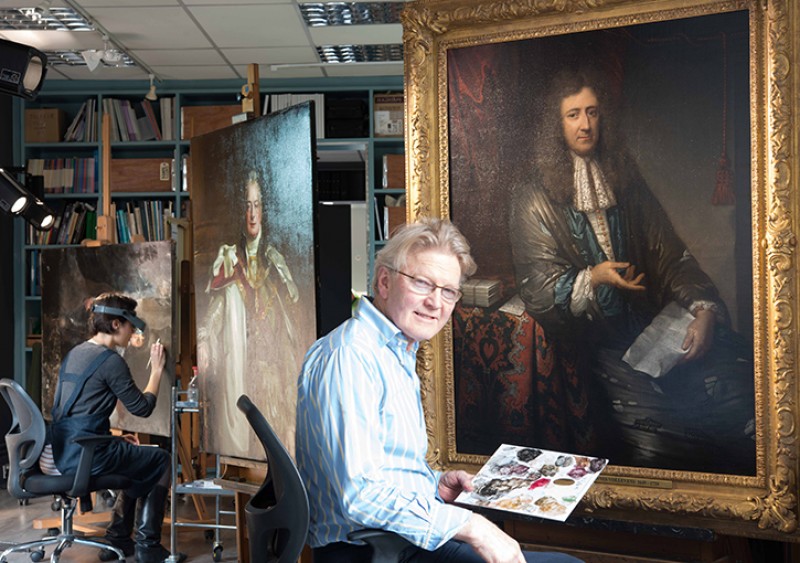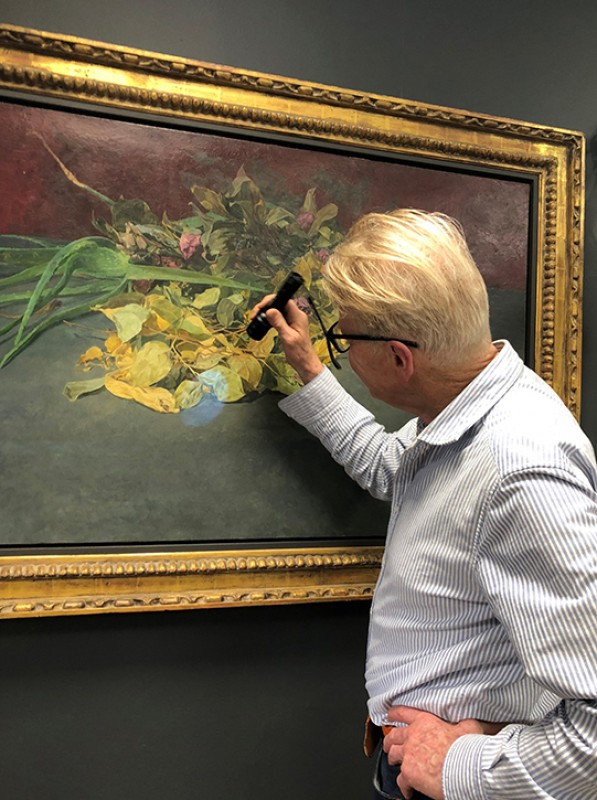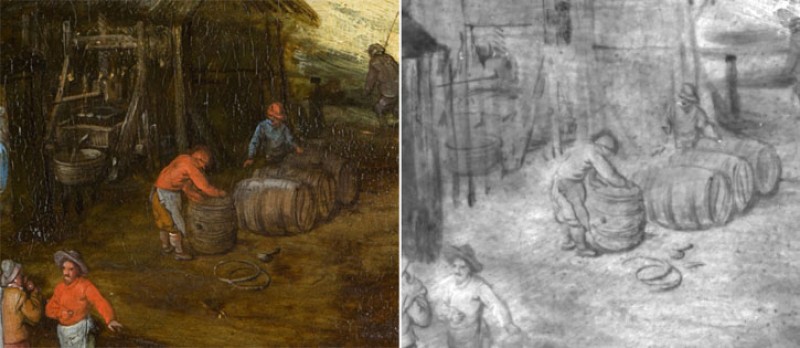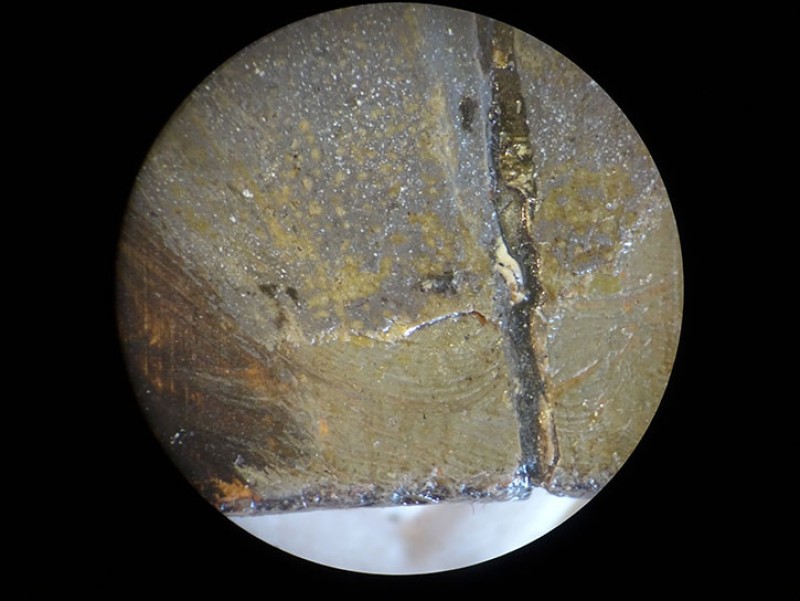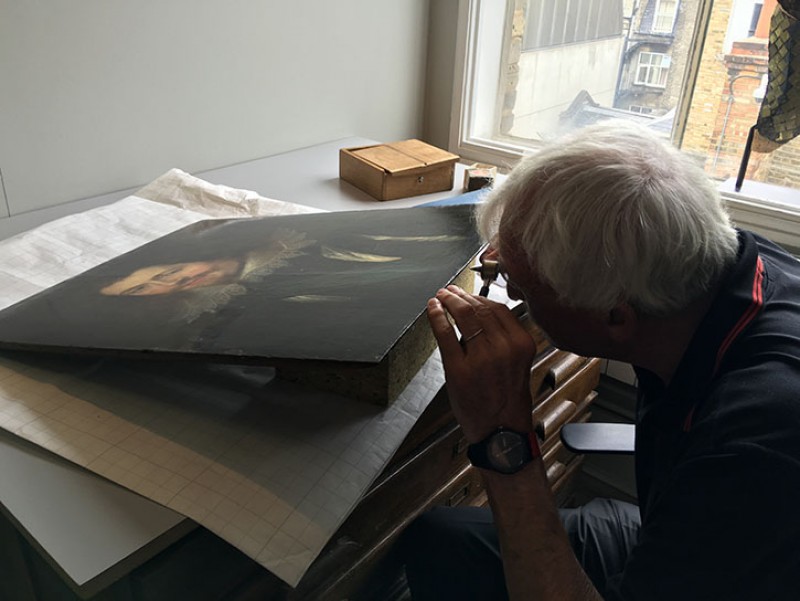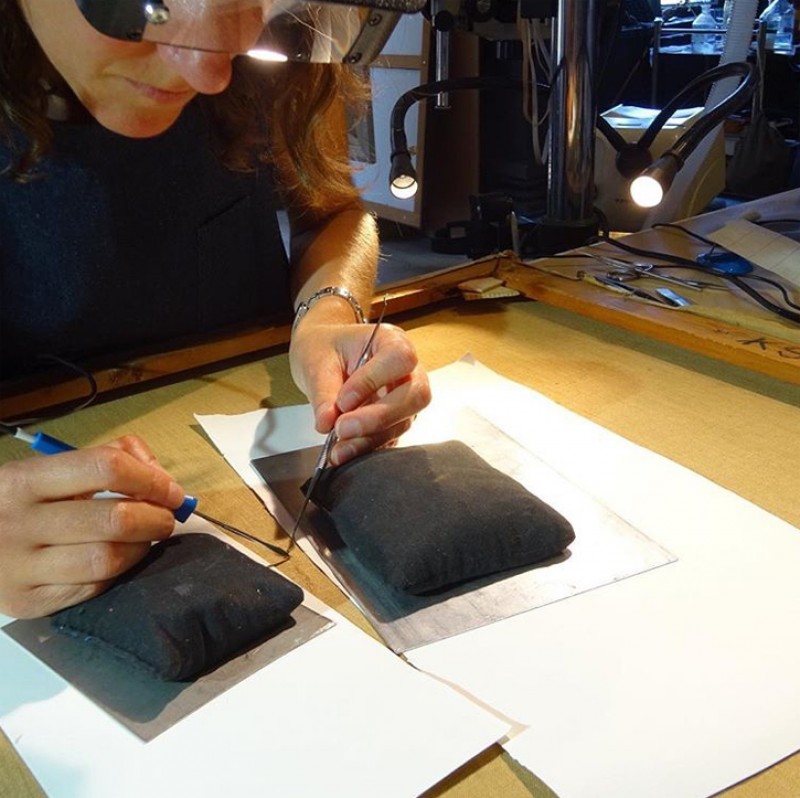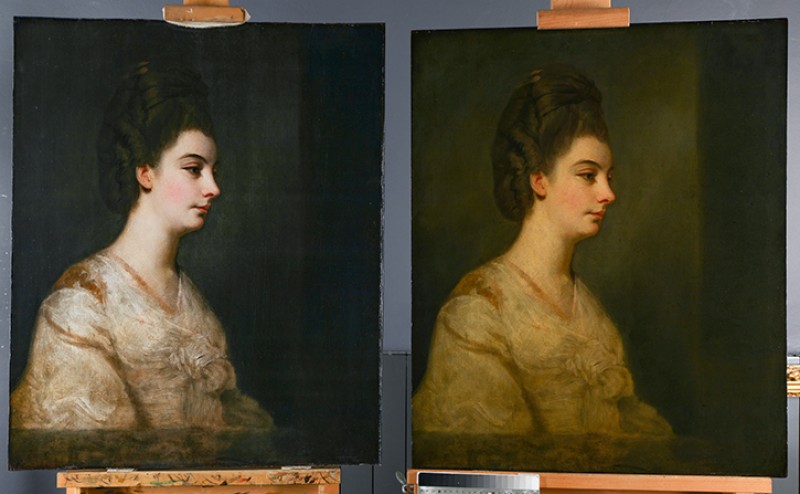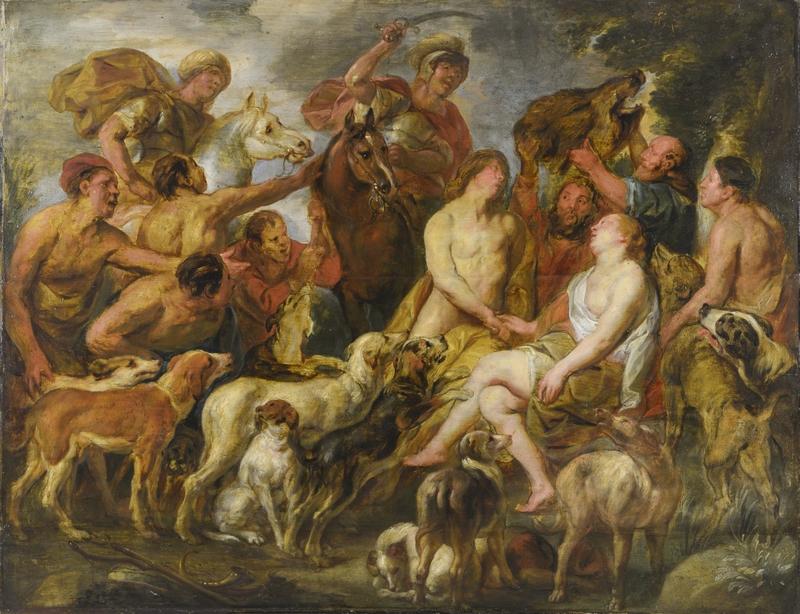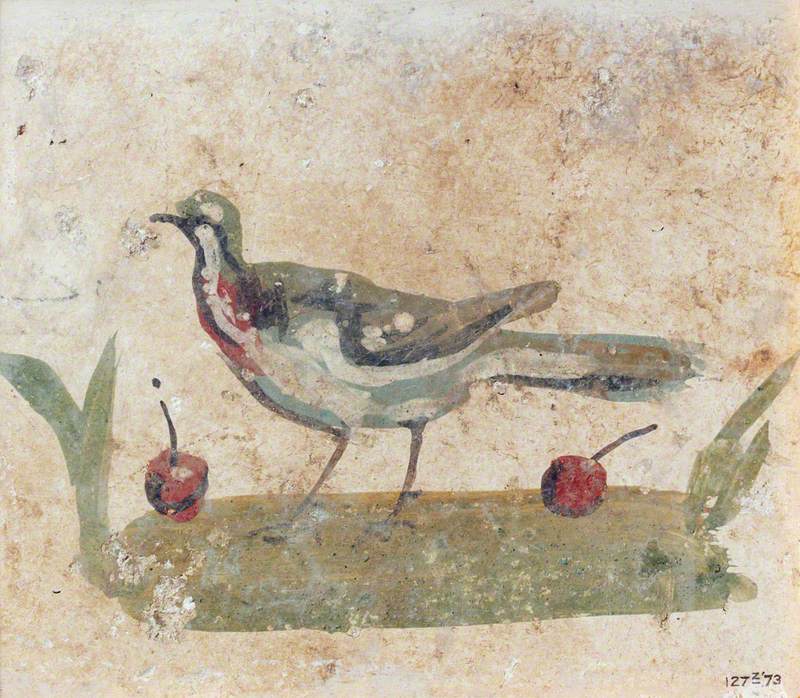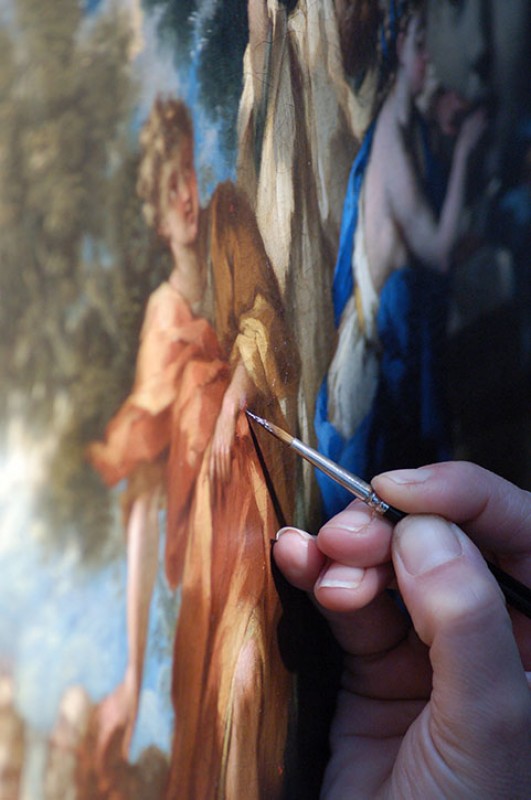In this series, 'Conservation in focus', Simon Gillespie, Director of Simon Gillespie Studio, explores the art of conservation. In each article, Simon looks in depth at a particular technique or tool that is crucial to conservators and explores the challenges – and triumphs – associated with their everyday work.
In most cases, the final touch in carrying out art conservation is to apply a protective layer of varnish (I've discussed the benefits of varnish in an earlier article). Modern varnishes are synthetic, which means they don't oxidise and degrade nearly as fast as traditional organic varnishes, so when we apply a varnish today, we expect it will last a very long time.
Removing protective plastic from glazing ready for a painting to be put into a frame
Finally, once the picture is framed it's ready to go back on display. And of course, on Britain's Lost Masterpieces, we hope our many hours of work will result in it being framed and displayed, rather than hidden away in storage.
Some works may already have a frame. In that case, our job is to check that the frame fits properly so the picture can be placed safely and securely within it. We apply velvet tape on the inside of the frame where the edges of the painted surface of the picture will come into contact with the frame so that it doesn't result in abrasion. We will also check the framing fixtures and apply new ones if needed.
Fitting an artwork into a climate frame
Glazing is also a consideration: at a basic level, it protects the painting from physical impact. There are also types of glazing with a UV filter to protect the paint from degradation through exposure to sunlight. Traditionally, one of the problems with glazing has been that glass is reflective, which can make it difficult to view the painting, in some cases. However, today there is low-reflective glass so the painting can be protected without compromising on the enjoyment of viewers. Acrylic glazing is lighter in weight and a good alternative to glass, but is more prone to scratching, which again can affect the visibility of the artwork. Thankfully, these days, scratch-resistant acrylic is available.
Framing a work by Rubens
In recent decades, there has been a big interest in developing preventative conservation measures – a lot of the problems surrounding the pictures in conservation studios could have been avoided. For example, fluctuations in humidity cause wooden panels to contract and expand (think of your front door getting a bit jammed in the doorframe during a rainy week), but the paint on the panel does not react at the same rate. This difference in movement means that paint on a panel can flake and fall off. A conservator can consolidate the paint and fill the losses but will also be keen to avoid the problem happening again. It's even better if the damage does not occur in the first place!
On a rainy day, art galleries tend to be especially busy. All of the visitors coming in with damp coats and hair cause an increase in the humidity levels in the gallery, which can impact the paintings on display. Museums and galleries often go to great expense to control relative humidity in their premises, which not many historical houses can afford, unfortunately.
Framing a Rubens portrait with a specialised chamber
A conservator might suggest that the picture be placed in a chamber frame which acts as a buffer between the wider world and the artwork. This type of structure involves sealing the painting inside the frame so that changes in the environment do not affect the painting: the glazing at the front is sealed into the frame with aluminium tape, and a backboard will seal the reverse. Such a structure also provides physical protection from impact from both the front and reverse, which is very important if the artwork is going to be handled and transported: most damages we see on paintings have occurred while the artwork was being moved. One example of a painting we have placed in such a chamber is the portrait of the Duke of Buckingham by Rubens.
Simon with paintings from series three of 'Britain's Lost Masterpieces'
In conclusion, conservation is a complex and vast subject, and in my day-to-day work, paintings are constantly presenting interesting challenges. I hope this series of articles has given an interesting glimpse into what is truly an exciting world. I've been privileged to share my life with these wonderful paintings and it's lovely to share their stories with you.
Simon Gillespie, Director at Simon Gillespie Studio
Previous: Sympathetic retouching
Art UK thanks Simon and the Simon Gillespie Studio for the 'Conservation in focus' series of stories
